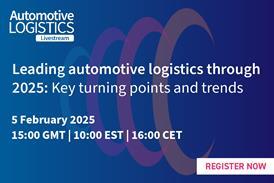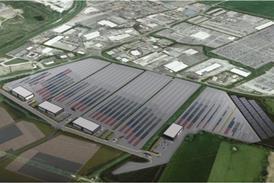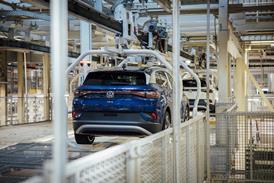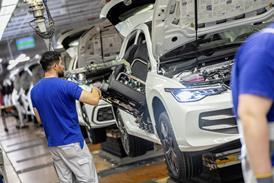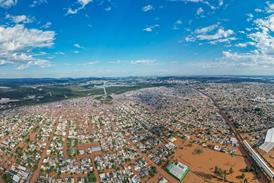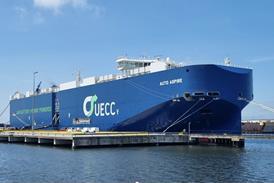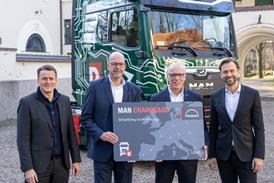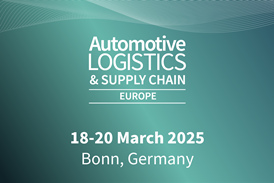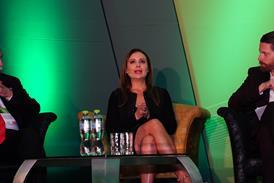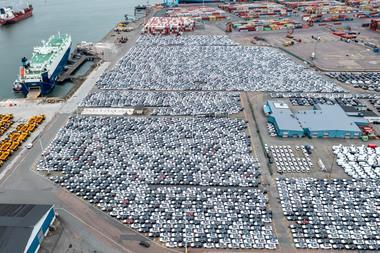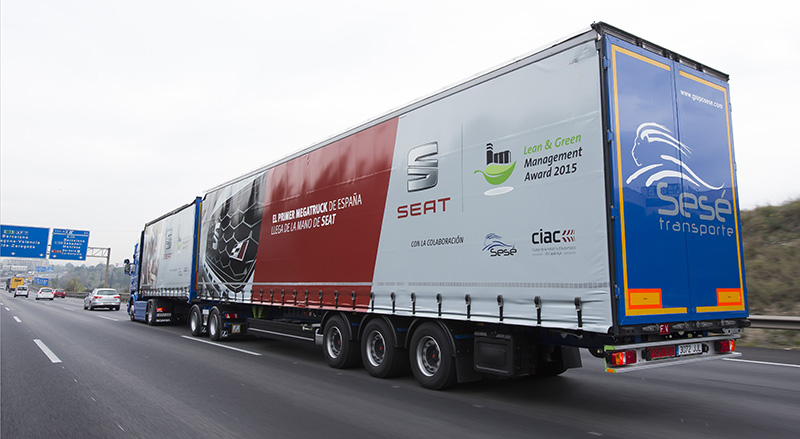 Seat’s supply chain leaders open up about rail infrastructure, the carmaker’s use of automation and its service parts network
Seat’s supply chain leaders open up about rail infrastructure, the carmaker’s use of automation and its service parts network
In this story...
However, Seat has basked in the light of Spain’s rising sun for the automotive industry. Recovery at home as well as in much of western Europe has pushed up local sales and production; so, too, have rises in key export destinations beyond the EU, including Mexico (the brand’s fourth largest global market) and Turkey (its sixth). This turnaround helped Seat post a profit in 2015 for the first time since 2008, while the brand’s sales have risen nearly 30% over the past four years, surpassing 410,000 in 2016 – its best results since before the financial crisis.
In March Seat also announced that it was leading the VW Group's expansion in North Africa, including a joint venture with Algerian sales partner Sovac to assemble a range of models, including the Ibiza, VW Golf and Caddy and the Skoda Octavia.
Seat’s competitive production setup in Spain, together with its sharing of vehicle platforms and plants across Volkswagen Group’s European network, has led to further growth and complexity in the supply chain. Seat’s assembly plant in Martorell, north-west of Barcelona, is running on three shifts and approaching its maximum capacity, according to Enric Martí, logistics director at the carmaker. The plant built a total of 449,063 units in 2016, including 313,216 Seat Ibiza and León models, plus nearly 136,000 units of the Audi Q3 SUV.
This volume is set to increase further, with the production launch this year of the next generation Ibiza and a new compact SUV, the Arona. From 2018, the Audi A1 will replace output of the Audi Q3 in Martorell.
Seat models are also produced in other Volkswagen Group factories, including the Alhambra in Palmela, Portugal; the Mii in Bratislava, Slovakia; and the Toledo and Ateca in Skoda’s Czech plants in Mlada Boleslav and Kvasiny, respectively.
This network of cross-production has led to a growing number of parts exchanges and supply flows across the group, which Martí’s team works together with Volkswagen’s group logistics and other brand logistics teams to manage.
Such exchanges are set to grow even further after the Seat Componentes plant in El Prat de Llobregat, south of [sta_anchor id="1"]Barcelona, was awarded production of the MQ281 gearbox, which will serve group vehicles worldwide on Volkswagen’s MQB platform. Production will start in 2019 and is expected to reach volumes of 450,000 units per year.
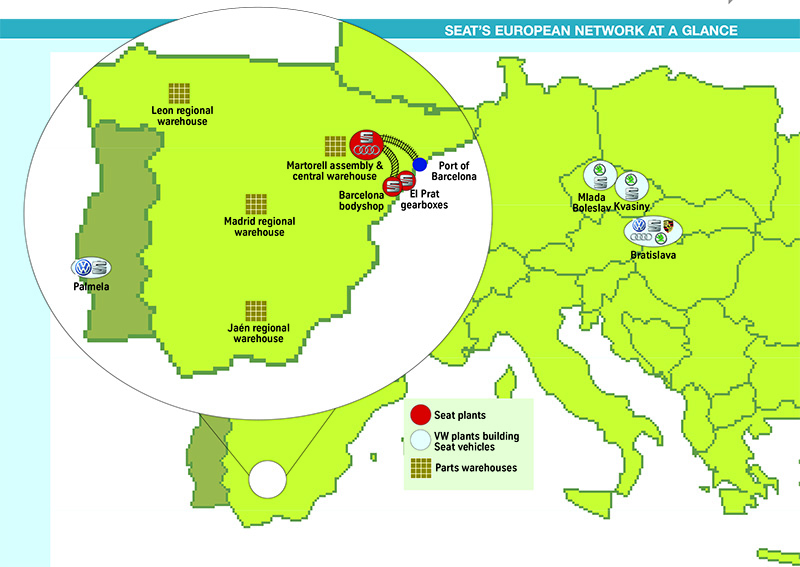
A shining exampleAlong with more shared supply and production across Europe, Seat’s logistics within Spain is an interesting example of tightly integrated but highly complex processes. It is the only carmaker in Spain that has full-scale vehicle development, design, manufacturing, sales and aftersales, which helps Seat to plan its supply chain and logistics years in advance. The result is an example of individual brand strength in logistics innovation across the Volkswagen Group. For example, the plants rely on a high amount of multimodal transport for inbound and outbound logistics. Plants and warehouses also use advanced logistics technology and automation, including automated guided vehicles (AGVs) for line-side delivery and RFID for vehicle tracking. Its spare parts warehouse in Martorell is also a global export centre, and uses a complex set of IT and parts-handling automation.
Logistics innovation plays a key role in keeping the production setup competitive. For example, although Martorell assembly is some 40km from Seat’s primary press and bodyshop at its factory in Barcelona, the distance and cost has been bridged thanks to the carmaker’s ‘Cargometro’ train, a dedicated, non-stop rail service between the plants. According to Martí, two trains make one trip per shift, or a total of six journeys per day. The train moves all the parts built in Barcelona and used in Martorell, which includes 206 different references and 188,000 parts per week – that represents about 50% of the parts that leave the bodyshop and 11% of Martorell’s total inbound supply.
Likewise, a dedicated ‘Autometro’ train service links the Martorell plant directly to the port of Barcelona; last year 106,499 finished vehicles moved on the train, or 23% of the plant’s total production, according to Martí.
The train links have helped Seat save considerable money and emissions.
“Cargometro does away with about 32,000 truck trips annually and reduces emissions by 1,800 tonnes of CO2 annually,” he says. “Autometro avoids around 25,000 trips by truck and 700 tonnes of CO2 annually.”
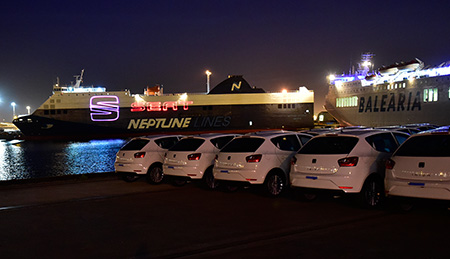 Seat's diversified export base should help it cope with political fluctuations within and beyond Europe
Seat's diversified export base should help it cope with political fluctuations within and beyond EuropeHowever, Seat and its logistics also have disadvantages, including geographic distance from much of Volkswagen Group’s primary supply base in central Europe. Having to deal with Spain’s Iberian rail gauge, which differs from the UIC gauge across the continent, is also a perennial difficulty in exporting vehicles elsewhere in Europe.
However, Seat has benefitted from increased investment in Spain’s supply chain and infrastructure, as well as the recent rollout of ‘megatrucks’ – 25.5 metre long equipment – for some destinations in the Iberian Peninsula.
Martí anticipates more growth for Seat, even in the face of political risks in Spain and Europe, such as Brexit (the UK [sta_anchor id="2"]is Seat’s third largest market after Germany and Spain). He thinks Seat’s diversified export base within and beyond Europe will help it to cope with changes. Overall, Martí is expecting more rays of light in the supply chain, too, as the carmaker further advances its logistics processes and expands both brand and group production across its network.
Multimodal and connected: Enric MartÍ, logistics director
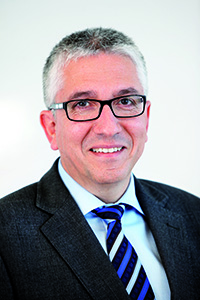 Enric MartÍ: proximity of factories to Barcelona port is a key strength
Enric MartÍ: proximity of factories to Barcelona port is a key strengthAutomotive Logistics: What advantage does Seat gain from having vehicle development and engineering together with production and sales?Enric Martí: In terms of logistics, it enables us to provide input into the product decisions during the earliest stages of vehicle development. Seat’s logistics engineers actively participate in the multidisciplinary teams that develop each vehicle component and contribute with the necessary logistical criteria – such as packaging and product complexity – that will later have an effect on optimising costs and improving quality in the different supply chains designed for each new product. This simultaneous engineering, of course, enables the improvement of market launch schedules of new models.
What would you point to as Seat’s strengths in its logistics network and supply chain in Spain?The proximity of our factories, including both Componentes [gearbox plant in El Prat] and Martorell, to the Barcelona harbour as a southern European hub, is a vital aspect for promoting our inbound logistics chains from supply locations, such as faraway African and Asian countries, as well as for facilitating exports of our products.
And what are the main weaknesses? Spain’s true handicaps for logistical competitiveness are its geographic location, ongoing deficits and inefficient management of freight transport infrastructure. We need to improve infrastructure in Spain and the region, especially rail, and in particular for the connection of our Martorell factory to the tracks adapted to the UIC gauge. Having these links would allow for us to considerably increase the use of rail transport for our exports to Europe.
More broadly, the construction of the ‘Mediterranean Corridor’ rail link, with UIC track gauge and included in the priority European freight corridors, is necessary to boost our competitiveness.
A positive highlight, however, is that we have begun to use megatrucks at 25.25-metre length for some specific freight, which has led to a clear reduction in costs and emissions.
Are you encouraged by investments in regional infrastructure and by port terminals? A number of projects or investments in Spain’s road, rail and port infrastructure are either underway or have recently been announced. Valencia is making a €233m ($250m) investment in its ports up to 2020, while the Ministry of Public Works and Transport is currently funding a number of projects through 2024.
How will these investments benefit Seat as it continues to grow?We expect the scheduled investments will help solve the shortfalls in infrastructure, which, like the Mediterranean Corridor, have so far prevented us from increasing our competitiveness even more.
Seat has pioneered the just-in-time method of parts supply to the assembly line in Spain. We understand that you have recently introduced the supply of front-end modules by automatic transport systems. Can you tell us more about that?This logistical process involves moving the front-end module directly from the supplier to the unloading area and on to the assembly line synchronous with production, using AGV technology. It has led to a clear improvement in productivity, ergonomics and error reduction. Since then, this system has been copied to automate other synchronous supplies to the assembly area, such as for the rear axle fuel tank. In both cases, we use AGVs that can move in any direction.
 Seat operates more than 130 AGVs managed by a central control system
Seat operates more than 130 AGVs managed by a central control systemIs this leading you to roll out AGVs more widely in Seat’s supply and production?Following the successful result of pilot projects carried out a few years ago, which featured convoys of AGVs to supply components to the assembly lines, today we are making extensive use of this system, with more than 130 units operating at full capacity and managed by a central control system. We now have a fully automatic process, as object-identifying cameras with artificial vision detect whether the AGV supply convoys are empty so they can return from the assembly lines to the supermarkets, thus closing the full automatic cycle. This is only one of the innovations we have implemented recently, and soon there will be many more.
Seat took a lead in using RFID for tracking finished vehicles. At what point during the assembly processes is the tag installed, and up to when is it tracked?Since 2013, all our vehicles coming off the assembly line are identified with an RFID tag. A tag is assigned to each vehicle in the final stage of the manufacturing process, just before its final handover for onward transport. At the logistical facilities at the Martorell factory, there are tag-reader antennas installed at the gates of each sub-process, such as location, truck loading, train loading and dispatch.
Outside the facilities, vehicle receiving in the Barcelona harbour of the Autometro train is also carried out using RFID technology.
We are currently developing a project to make upstream progress with RFID technology, which would require tags in earlier stages of the vehicle manufacturing process.
Is RFID used on the inbound side of the business to trace the whereabouts of parts?[sta_anchor id="3"]We are currently carrying out a working pilot for component supply from our Barcelona [bodyshop] factory to the different consumption points in the Martorell factory workshops. We will soon have the results and then we can decide whether to use it extensively in our inbound processes.
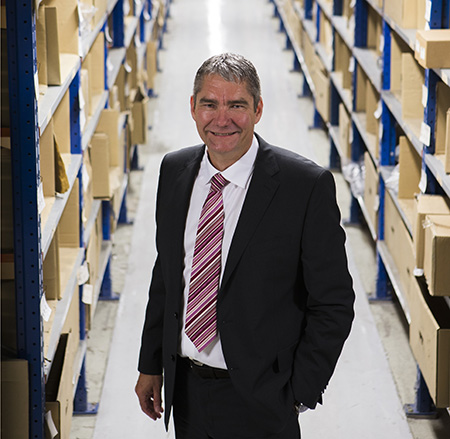 Dr Ulrich Lutz oversees Seat’s fast-moving service parts operations
Dr Ulrich Lutz oversees Seat’s fast-moving service parts operationsSeat’s service parts and aftermarket supply chain, like its production and vehicle logistics, has both common points across the Volkswagen Group, as well as dedicated channels. While common Seat parts with other brands are stored together in group warehouses, including the Volkswagen Original Parts Centre (OTC) in Kassel, Germany, Seat-specific order lines are stored and dispatched from the carmaker’s central spare parts warehouse in Martorell, which serves both Spain and export markets.
According to Dr Ulrich Lutz, Seat’s director of aftersales, the central warehouse dispatches 13,500 order lines and stores, on average, around 1,800 containers of different sizes daily, with parts delivered from both suppliers and other Volkswagen Group plants. Another 13,700 order lines are prepared and dispatched from three further regional warehouses located in León, Madrid and Jaén.
Automotive Logistics: How many parts does the Seat Original Spare Parts Centre (CROS) in Martorell have the capacity to store?Ulrich Lutz: The total range in stock in our warehouse network is close to 120,000 [part] references, of which slightly over 90,000 are available in the central spare parts warehouse. There is room in our central warehouse for 150,000 [stock] units.
How many service parts centres does CROS feed in Spain, Portugal and globally?Our facilities feed just over 770 Volkswagen Group dealerships in Spain and Portugal. In addition, Seat parts are exported to over 75 markets worldwide from the central warehouse in Martorell.
Does Seat manage this centre itself or does a contract logistics provider manage it?Seat’s Original Spare Parts Centre is managed entirely with internal resources. Service providers manage the regional centres. Grupo Sesé currently manages the León and Madrid platforms, and T&W manages the centre in Jaén.
And which logistics provider moves the parts out from the centre to the service centres and dealers?For each region in Spain we have a provider in charge of transporting parts. In the regional warehouses, the same operator who manages the operation is also in charge of transport to the dealers. In the eastern region of the peninsula, the parts that leave our central warehouse are distributed by T&W.
For exports, which are wholly dispatched from our central warehouse, each distribution route to each importer is allocated to different operators according to tenders.
Can you outline the IT system used to check stock and order status?The comprehensive management of stocks, customer orders, etc. is carried out using the ET2000 system [built by SAP and Volkswagen Group]. Warehouse operations are performed using the SIGLA system, which includes the entire warehouse operation from the reception of parts to final dispatch to customers.
SIGLA offers great consistency in our logistics processes as well as flexibility to satisfy different kinds of orders and the markets we serve.
How automated are the processes at these warehouses?We currently have two autonomous warehouses in the central spare parts centre, which represent about 30% of the picking lines carried out in the warehouse.


